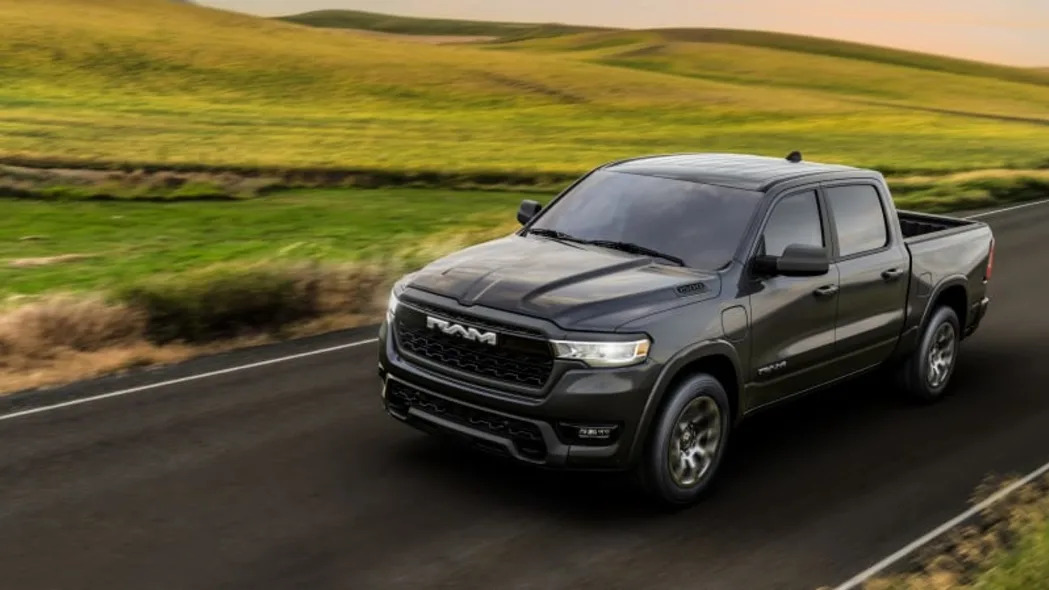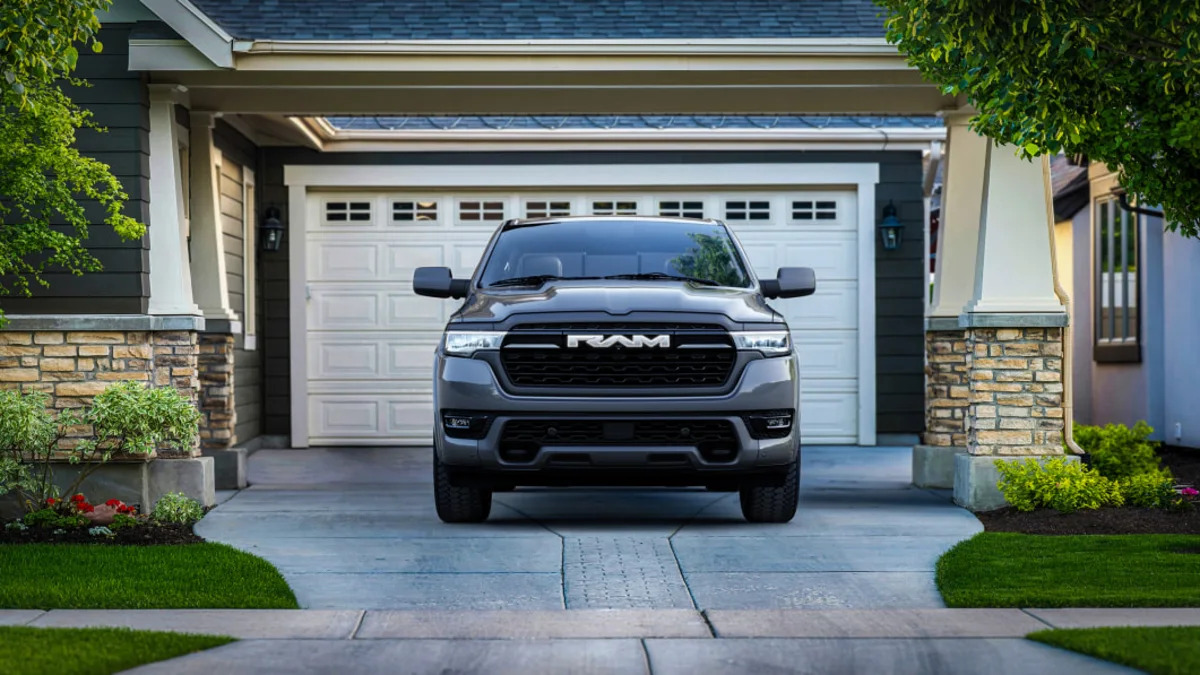Hi. My name is Byron and I’m a Ramcharger truther.
I’m telling you right now that the single most important launch in the year of our Lord 2024 is the 2025 Ram 1500 Ramcharger. I don’t just want Ram’s range-extended electric truck to succeed; I feel somewhere deep in my soul that it must. And on it, I’m hinging the hopes of myself and everybody else who, for the love of all things worthy and decent, wants to see America’s most profitable segment take just one iiiiiitty-bitty swig from the plug-in keg. And in a market where beggars can’t be choosers, the Ramcharger is the next-best thing. And I stand ready to give up my last full measure of rhetorical devotion in its defense.
I get it. The “typical” pickup buyer isn’t clamoring for electrification, but it should not have taken this long for us to get some form of plug-in pickup. And let’s get something straight here: No buying segment is nearly as monolithic as that notion would suggest — certainly not one as large as the pickup market. More than 2.8 million Americans bought new trucks in 2023; it would only require a take rate of 1% to create a market bigger than Dodge’s entire brand footprint. Were buyers crying out for the Wrangler 4xe? Its runaway success made it the country’s best-selling plug-in (an honor it still holds) pretty much overnight.
And bluntly, there’s no more perfect candidate for a plug-in setup than a pickup. Trucks are big and offer plenty of options for clever battery integration while still leaving adequate space for a fuel tank. Plus, as we saw from even the (not-a-plug-in) hybrid Ford F-150, there are myriad practical advantages to the inclusion of what amounts to an onboard gasoline generator. And more than that, plug-ins are simple, especially in longitudinal platforms. If you look at the diagram of Jeep’s 4xe, the electric motor just looks like a giant starter hooked up to a battery by really wicked jumper cables.

I’m not saying that we should have already had a plug-in pickup by now — I’m saying we should have had 10. Some good, maybe some not so good. The market should be a generation or more deep in sales data and customer feedback. We should know by now exactly what the plug-in customer wants — how big the battery should be and by extension, how small the fuel tank. Instead, America’s first mainstream pickup truck with both a plug and a gasoline engine is a “Choose Your Own Adventure” volume with a $60,000 starting price.
See, the Ramcharger is technically a range-extended electric vehicle, not a plug-in hybrid vehicle. You can treat it like an EV or not; it’s entirely up to you, but that’s fundamentally what it is. The distinction boils down to how exactly it’s propelled. The Ramcharger’s onboard V6 can’t directly power the drive axles. It generates electricity which is then sent to the electric motors to power them indirectly, but there’s no mechanical interface between them. In other words, if you have two drive types (electric and gas, in this case) and both can power the car either independently or simultaneously, it’s a hybrid. If only one actually drives the wheels, as is the case here, then it’s not. So when Ram says the Ramcharger isn’t a hybrid, that’s both technically true and marketably convenient. But will truck shoppers buy it?
If you’ll remember, the Chevy Volt — a technologically impressive and genuinely decent car — suffered from a similar identity crisis. Like the Ramcharger, it occupied such a limited niche that customers had no way to contextualize it. Unlike the oddball four-seater Volt, however, the Ramcharger happens to be a pickup that can do normal pickup things. Convincing potential customers that the latter is true will be Ram’s greatest hurdle. If the “typical” truck buyer is anti-electrification, why would they want an electric Ram in the first place, let alone one that also has a gas engine?

This is Ramcharger’s greatest weakness. It has no precedent — no institutional infrastructure, if you will. This is neither Ford, which has years of F-150 Hybrid sales behind it, nor Toyota, which has similarly hybridized the Tundra. This is Ram, where the closest thing offered to a hybrid is the 1500 Classic the service department uses to haul dead batteries to wherever they're staged for recycling. Jeep's 4xe is just a few years old and even most car enthusiasts forget that the Chrysler Pacifica PHEV exists. Let’s assume for a moment that I’m a truck buyer who is ready to electrify; why on Earth would I walk into a Stellantis dealership first? Does Ram have the brand authority to claim that it’s offering the perfect answer to every form of EV purchase anxiety? I’m not so sure.
I don't mean to throw Ram/Stellantis under the bus; every truck manufacturer shares equally in the shame of not offering a PHEV pickup sooner. While it may be the most conservative of the Detroit Three when it comes to powertrain development, it's hardly the only guilty party. Nor do I mean to imply that its executives are doing anything to deliberately sabotage the program. Sometimes, a pivot simply has to happen whether you're fully prepared or not. I believe the groundwork should have been laid sooner for the sake of the customer, but here we are. Instead of easing them into their first round of electrification, we're handing them the controller with the tutorial disabled.
As a result, it feels like Ram boss Tim Kuniskis is essentially saying, well, if traditional truck buyers won’t accept a range-extended electric offering, they’re not going to accept an electrified pickup at all. Might as well stare those electrification dorks in the face and go all-in against their bluff. It’s a valid approach, but let me pose it this way: Would you challenge the buyer who wants a V8 pickup to settle for the TRX or nothing at all?
But this thing — this truck with both a gasoline engine and electric motors that somehow isn’t a hybrid — is all we have to hang our hopes on until the Gladiator 4xe arrives in 2025. The Ramcharger will be marketed as a step up from an all-electric ideal that truck buyers don’t embrace, but instead it should have been the step up from a convention that never materialized — the king of a hill worth dying on.
I’ll be up here just the same.


Sign in to post
Please sign in to leave a comment.
Continue